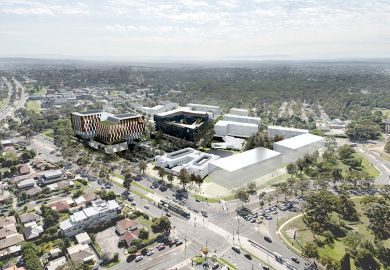Stellar financial management at Australia’s five biggest universities has buttressed the bottom line of the country’s entire higher education sector, despite a decade of policy turbulence, according to a new analysis.
Research by former University of Melbourne deputy vice-chancellor Frank Larkins has found that the five – Melbourne, Monash, Sydney and Queensland universities, plus UNSW Sydney – have recorded financial performances that other industrial sectors “would die for”.
This underpinned a strengthening of annual revenues across the sector as a whole, even after rampant growth in domestic enrolments – encouraged under the demand-driven funding system – left universities with unsubsidised students when the government capped undergraduate places last year.
The analysis suggests that the big universities’ financial performance accelerated in two spurts: from about 2015, after most of the five had ramped up their intake of overseas students, and again in 2018 when the capping of domestic places saw them double down on international recruitment.
“My core question was, how well have the key universities done over a decade?” Professor Larkins said. “The answer is extraordinarily well.
“We’re talking about 40 per cent increases in real terms, at a time when governments are not putting in proportionally the level of funding they have in past. The question is, can universities continue this kind of performance? It’s built on international student load narrowly focused on China and India, so the vulnerability is there for the future.”
Professor Larkins analysed 10 years of figures from education department financial data and university annual reports. He found that average revenue growth of 40 per cent across the five universities – around one-quarter higher than the average increase across the sector – had pushed each institution’s earnings to or beyond A$2 billion (£1 billion).
The standout performer was UNSW, which boosted its earnings by 46 per cent. And it increased its asset base by an extraordinary 75 per cent, leapfrogging Queensland to become Australia’s third richest university on this measure.
The five universities also increased their equity base by a combined A$3.7 billion, despite major building debts accrued by the two Sydney-based universities. This investment appeared to have paid off, with the two Sydney institutions increasing their revenue on a per-student basis. On this measure, the other three big universities – and the sector as a whole – recorded declines.
Professor Larkins said UNSW’s financial success augured well for the future. While its revenue growth in proportional terms had been the best of the five, its asset growth had been considerably higher again. “They’ve laid quite a strong foundation,” he said.
“They’ve built up their assets – new buildings, further land purchases and so on – which presumably has increased their capacity to invest in more students, research or industry partnership.”
Queensland performed comparatively poorly, recording revenue growth below the sector average and slight reductions in its equity and asset base. Professor Larkins said it had been slower to escalate overseas recruitment than the other four institutions.
A Queensland spokesman said that “significant growth in international student numbers, business partnerships, a continuing philanthropic campaign and improved operating performance” had restored the university’s surplus in recent years. He said that under a “more relevant” financial measure – underlying consolidated earnings before interest tax, depreciation and amortisation – Queensland’s revenue growth had been higher than Professor Larkins’ analysis indicated.
Register to continue
Why register?
- Registration is free and only takes a moment
- Once registered, you can read 3 articles a month
- Sign up for our newsletter
Subscribe
Or subscribe for unlimited access to:
- Unlimited access to news, views, insights & reviews
- Digital editions
- Digital access to THE’s university and college rankings analysis
Already registered or a current subscriber?












